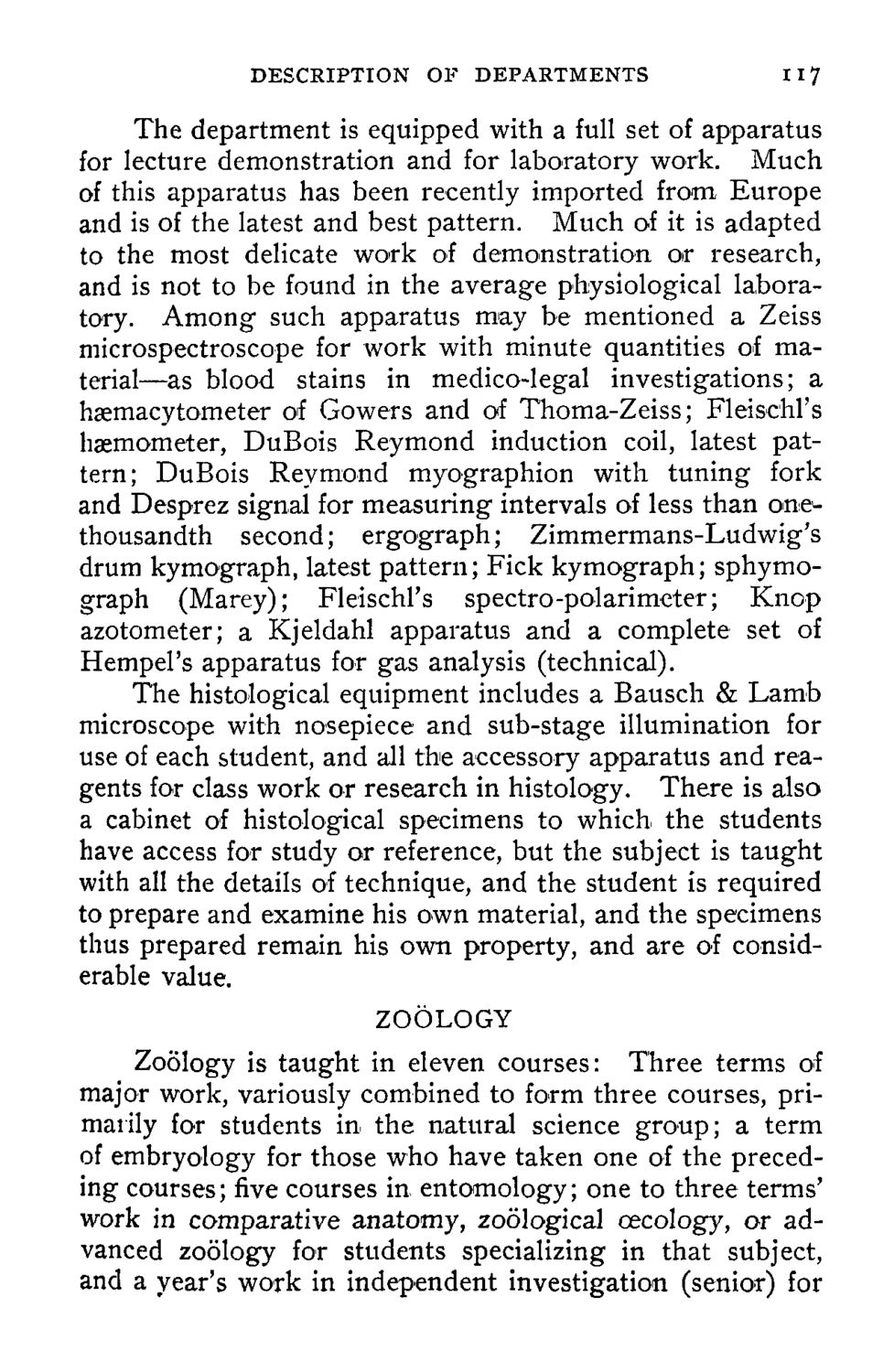| |
| |
Caption: Course Catalog - 1897-1898
This is a reduced-resolution page image for fast online browsing.

EXTRACTED TEXT FROM PAGE:
DESCRIPTION OF DEPARTMENTS 117 The department is equipped with a full set of apparatus for lecture demonstration and for laboratory work. Much of this apparatus has been recently imported from Europe and is of the latest and best pattern. Much of it is adapted to the most delicate work of demonstration or research, and is not to be found in the average physiological laboratory. Among such apparatus may be mentioned a Zeiss microspectroscope for work with minute quantities of material—as blood stains in medico-legal investigations; a hsemacytometer of Gowers and of Thoma-Zeiss; Fleischl's haemometer, DuBois Reymond induction coil, latest pattern; DuBois Reymond myographion with tuning fork and Desprez signal for measuring intervals of less than onethousandth second; ergograph; Zimmermans-Ludwig's drum kymograph, latest pattern; Fick kymograph; sphymograph (Marey); Fleischl's spectro-polarimeter; Knop azotometer; a Kjeldahl apparatus and a complete set of Hempel's apparatus for gas analysis (technical). The histological equipment includes a Bausch & Lamb microscope with nosepiece and sub-stage illumination for use of each student, and all the accessory apparatus and reagents for class work or research in histology. There is also a cabinet of histological specimens to which the students have access for study or reference, but the subject is taught with all the details of technique, and the student is required to prepare and examine his own material, and the specimens thus prepared remain his own property, and are of considerable value. ZOOLOGY Zoology is taught in eleven courses: Three terms of major work, variously combined to form three courses, primarily for students in the natural science group; a term of embryology for those who have taken one of the preceding courses; five courses in entomology; one to three terms' work in comparative anatomy, zoological cecology, or advanced zoology for students specializing in that subject, and a year's work in independent investigation (senior) for
| |